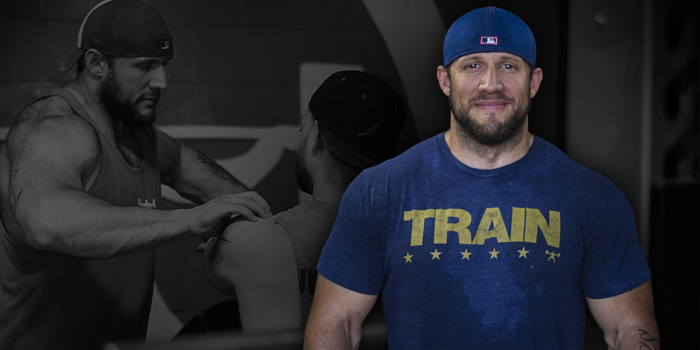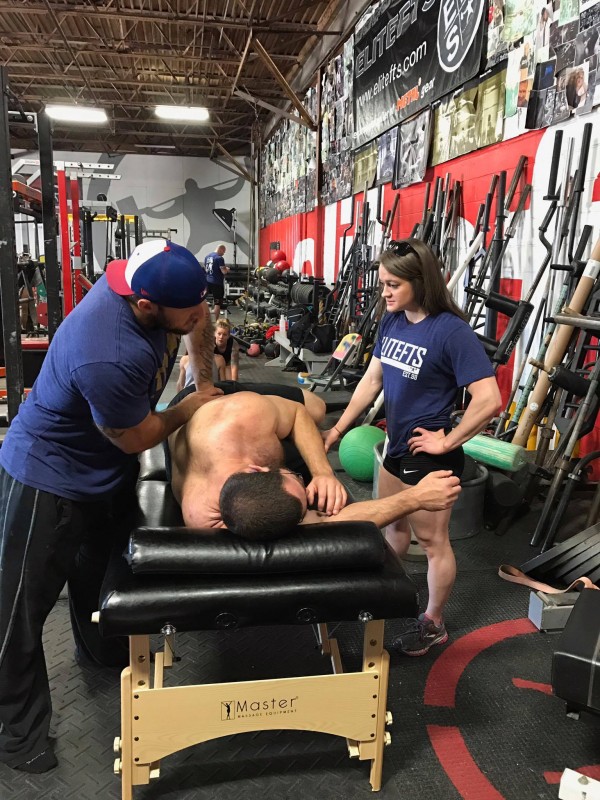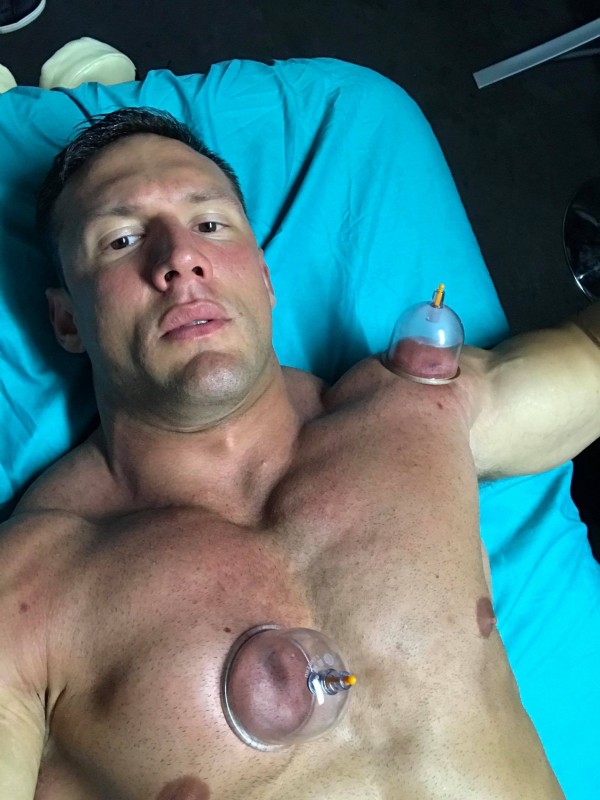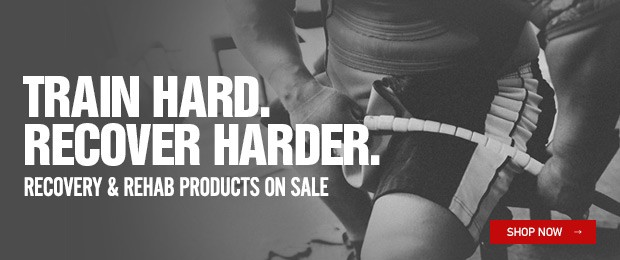
“It is the mechanism behind the pain that is most important, while the tools should be used to improve the functional reason for the pain and the problem.” —Author Unknown
The aim of this article will be to educate the reader on the many modalities used for soft tissue recovery and therapy. By reading this article it is my hope that you will gain a thorough understanding of the similarities and differences between modalities, which modality is best for certain injuries, how they are best used in your training, what their overall purpose is, and to give you a few guidelines you can walk away with for immediate results.
There is no best tool. Every tool has its place. It’s the practitioner or therapist when equipped with the right tools, that elicits the best outcome.
Priorities for the Powerlifter and Bodybuilder — Lower Body Mobility and Stability
Let’s take a quick glance at some of the important structures of fascia and muscular soft tissue so we can better understand the uses of these tools.
Fascia
Human fascia is an extracellular biological connective tissue that surrounds each muscle, nerve, organ, bone, artery, and vein. It is the glue that holds all the puzzle pieces together. Its most important functions include the ability to transmit force proximally and distally throughout the entire body, to hold and distribute mechanical tension when desired, allow correct motor control when healthy, and hold and protect important organs like the stomach and testicles. Fascia has two subsystems: superficial fascia and deep fascia.
Superficial Fascial Layer
The superficial fascial system is the outermost fascial layer. These layers are made up of connective tissues that possess cells called fibroblasts. What I find most interesting is that the number of layers that make up the superficial fascia and the amount of substances they contain depend on the quantity of fat, the sex, and the body area where it is located. This is important to know when treating different people. For example, there are differences between a female or male bodybuilder and a female or male powerlifter. Superficial fascial layers are affected the most in soft tissue treatment.

Deep Fascial Layer
The deep fascial layer is the last line of defense before reaching bone, muscle, nerve, etc. It is mostly comprised of a wet fibrotic collagen-like matrix that is tightly organized in a parallel order. It has a large amount of hyaluronic acid and is also comprised of fibroblasts with subsets of myofibroblasts. This gives some the notion that the fascial systems can contract independently of muscles. This is up for debate in many circles; I won’t go into my opinion here.
Most importantly is understanding that both layers work together and are controlled by the autonomic sympathetic systems. So yes, the flight or fight system that powerlifters are so notorious for jacking up controls your fascial system. Something to ponder, isn’t it?
Muscle Tissue
Muscular tissue surrounds bone connected by ligamental tissue. It is controlled by the peripheral nervous systems and is comprised of voluntary muscle actions. Skeletal muscle tissue is striated and covered by connective tissue. It is important to understand that soft tissue mobilization with tools will not change the structure of skeletal muscle tissue. No matter how much you Graston or scrape something, it won’t increase myofibril or sarcoplasmic size.
You are not changing structure with any soft tissue modality and anybody who tells you different is full of shit! But I digress.
Tools
Below are the most common tools associated with soft tissue therapy and what their main purposes are.
Graston/Instrumented Soft Tissue Mobilization Tools
These are the shiny, metal, medieval looking tools you most often seen in chiropractic offices, physical therapist offices, and some massage therapy clinics. There are different types of tools that have different purposes. Within the Graston family, you have larger tools, such as the handlebar, which are designed to cover a larger surface area. This is best used for muscles groups such as the quads, hamstring, erectors, traps, etc. The next tool worth mentioning is the scanner, sometimes called the boomerang. It looks exactly like what you are picturing in your head right now: a silver, double beveled edge, boomerang-like metal instrument. This tool is beneficial because of its ability to give immediate feedback as to where muscular tissue pathologies are located. It does this by sending a gentle vibration when it passes an area of sensitive tissue. This helps the therapist better locate the area of importance for a quicker, hopefully less painful, treatment. The next tools have multiple variations, with differently sized edges. These are your more precision-based tools and are used for smaller areas that need a lower intensity based treatment. These can be used on areas that have a smaller amount of adipose or muscle tissue such as the hands and feet.
There are many different brands but I won’t go into them. They all work. Be more concerned with the person who is holding it than what brand it is.
The proposed effects of using Instrument Assisted Soft Tissue Mobilization tools (IASTM) or Graston include:
- Breaking down scar tissue, fascial restrictions, and strengthening collagen
- Delivering controlled microtrauma for initiation of first steps in the healing process (increases fibroblasts)
- Decreasing metabolic waste and increasing the new uptake of oxygen, nutrients, and blood
I’m not here to argue about the effectiveness of these treatments. I do have my biases, and I believe everything has its place and purpose. It takes an educated clinician to know when to use it.
Priorities for the Powerlifter and Bodybuilder — Upper Body Mobility and Stability
What is important to understand is that all these tools and treatments have acute neurological effects and are not long-term solutions. They are a means to influence the bigger picture, whether that be increasing a certain range of motion, contraction, pain, tissue health, etc.
Population: This modality can elicit some pain based on the heaviness of hand on the clinician. If used correctly it should be maintainable. This modality is great for individuals that deal with repetitive motions in training or competition. These patterns, when placed under continuous load or stress, can become cumbersome and lead to injury. This is great for musculoskeletal injuries and pain.
Guidelines: One to two treatments per month should be sufficient for maintenance of sport or hobby, depending on its muscular stress and demand. When acute injury occurs, light Graston or IASTM can be used to assist in forming new tissue, only after the initial health phase, which can last seven to 21 days.
Scraping or GUA-SHUA
The main purpose of this modality is to create acute inflammation superficially to initiate the healing process, or to move stagnate blood and lymph (called microperfusion). Scraping and Gua-shua are from ancient eastern Asian medicine dating back some 2,000 years. Most do not know that it is considered a type of acupuncture therapy, but is not bounded by the laws of acupuncture practice. This modality, when practiced in its homeland, is dictated by ones “qi.” Stagnate or poor qi is displayed as muscle tightness or toxicity. A tighter muscle bounds the qi and needs a heavier hand. Unlike Graston or IASTM, Gua-shua (scraping) is performed in a press-stroking manner, meaning tension is placed on the tissue in a unidirectional manner until the petechiae appear. The darker the petechiae, the more chronic the injury; the lighter petechiae, the more acute.
The proposed treatment effects of Gua-shua include:
- Increases inflammatory response
- Initiates healing response
- Upregulates gene expression for enzyme heme oxygenase-1 (exhibits antioxidant and anti-inflammatory effects).
- Can decrease acute pain in patients with musculoskeletal neck pain
Population: This is especially beneficial if Graston or IASTM is too painful. Individuals with spiritual tendencies tend to drift towards this treatment due to its supposed interactions with ones “qi.” It is a safe and effective treatment when paired with a knowledgeable therapist.
Guidelines: Since this modality is more superficial and less invasive it can be used multiple times per month, which is slightly higher frequency than that of Graston or IASTM. However, the heaviness of hand by the therapist and the severity of the injury will dictate treatment protocol as well. Two to four times per month is optimal.
It is important to understand that Gua-shua or scraping is not supported by current research. The current research lacks proof as to its effectiveness on pain management.
Cupping
We can thank the summer Olympics of 2016 for the cupping craze! I can’t complain; the increase in demand for this service at my clinic increased 10 times when Michael Phelps entered the platform with octopus marks on his body. I’ve never heard such bullshit (pardon my French) spewed by reports on what this modality was and what its purpose is. So, I will clarify that here. Cupping is nothing new and dates back to ancient Chinese, Egyptian, and middle eastern cultures. There are two types of cupping therapy: wet and dry. I always prefer it wet. Current cupping practices are different from those practiced decades ago. Now, negative pressure is used to lift the skin and fascia from the muscle tissue. Long ago fire, alcohol, or herbs were used. There’s a lot of misinformation as to what cupping does. Some say it removes toxins. This, I can assure you is false, because it is your liver that removes toxins! However, cupping does move lymph fluid across the body, and sometimes this fluid consists of waste and toxins. Cupping can be done in a passive or active manner. This means that either the therapist puts them on and lets them sit (passive) or the therapist uses cupping with some sort of joint or fascial mobilization (active). The mobilization of tissues via cupping is said to have an acute impact on the range of motion. Current research lacks evidence to support this.
The proposed effects of using cupping therapy include:
- “Detoxification”, in some circles
- Promotes blood flow and healing in muscle tissue
- Increases in acute range of motion
- Decreases swelling via movement of lymph
- Decreases high blood pressure
- Helps with respiratory conditions
Population: This modality is beneficial for individuals who are looking for a less intense soft tissue treatment. It can increase and decrease intensity rapidly to fit patient/client needs. This may be more suitable for acute injuries rather than chronic. Individuals may benefit from cupping if they have limitations in range of motion due to swelling or fluid buildup. Those who need multiple treatments per week due to frequent training or competing sessions may benefit from cupping as well.
Guidelines: Can be used weekly if needed. Alternate between passive and active cupping.
It is important to note that cupping is not supported by current research to be an effective tool for pain management stemming from musculoskeletal and soft tissue injuries. More research is needed to ascertain its efficacy.
In conclusion, there are many soft tissue modalities that can be used to treat soft tissue injuries. Some are more effective for the acute injury and some are better for chronic injuries. Graston/IASTM, cupping, and scraping/Gua-shua can be used interchangeably based on the severity of injury and where you are in the healing and treatment phase. What’s most important is to find a qualified clinician who doesn’t rely on these tools as the basis of their rehab protocol. Repetitive, loaded, progressive movement will always be the king of rehab.
Everyone has their own opinion on what works and what does not. I know hundreds of professionals in multiple fields that believe in “something” that may not necessarily be backed by current research and study. Does this mean the hundreds or possibly thousands of positive outcomes they have seen in their respective fields were BS? Were they just placebo effects? Let me ask you this: If something you did was just a placebo effect but 99% of the time had a positive outcome, would you still use it? If your client or patient benefit, isn’t that the point?











